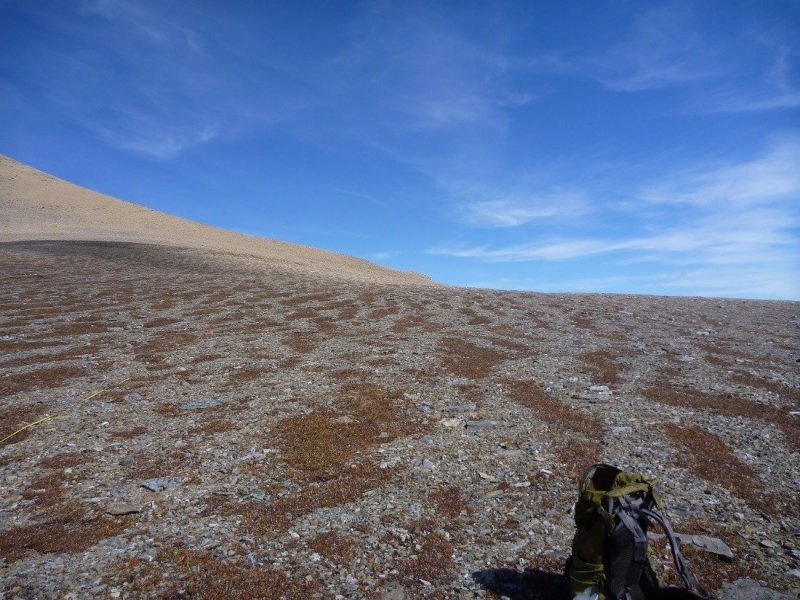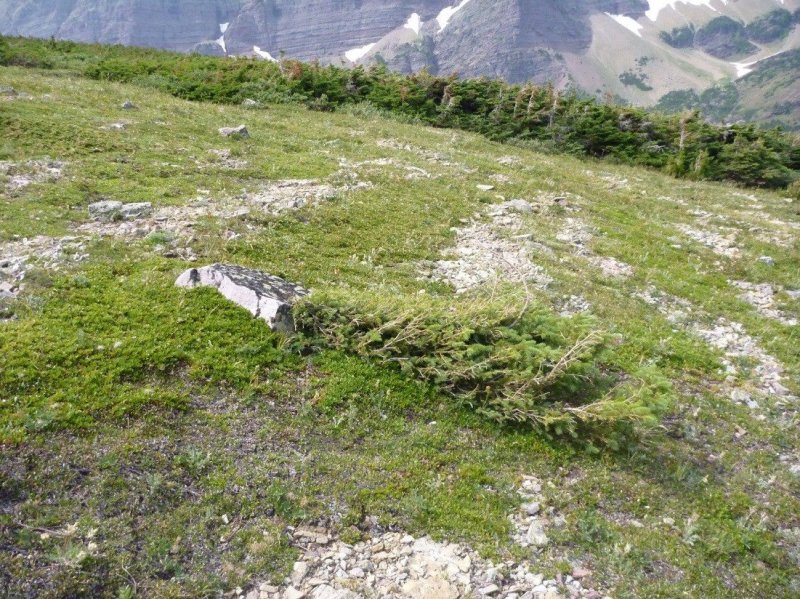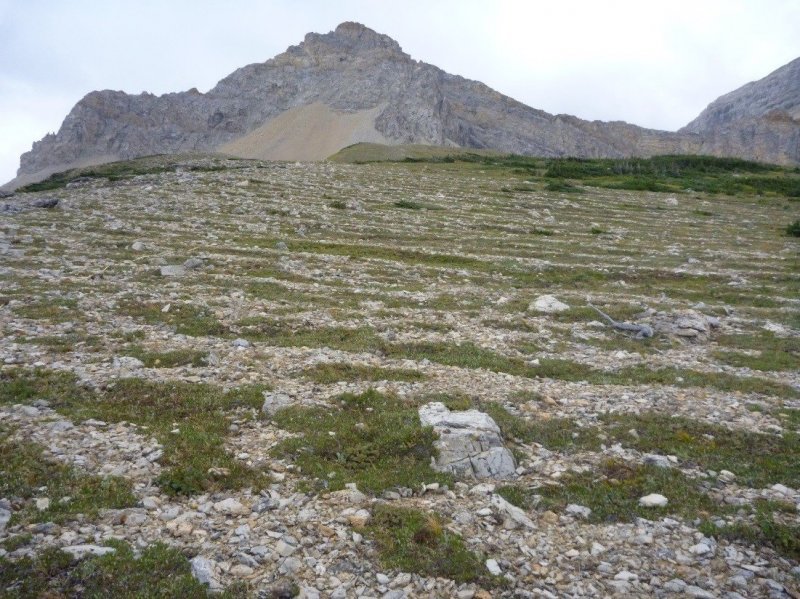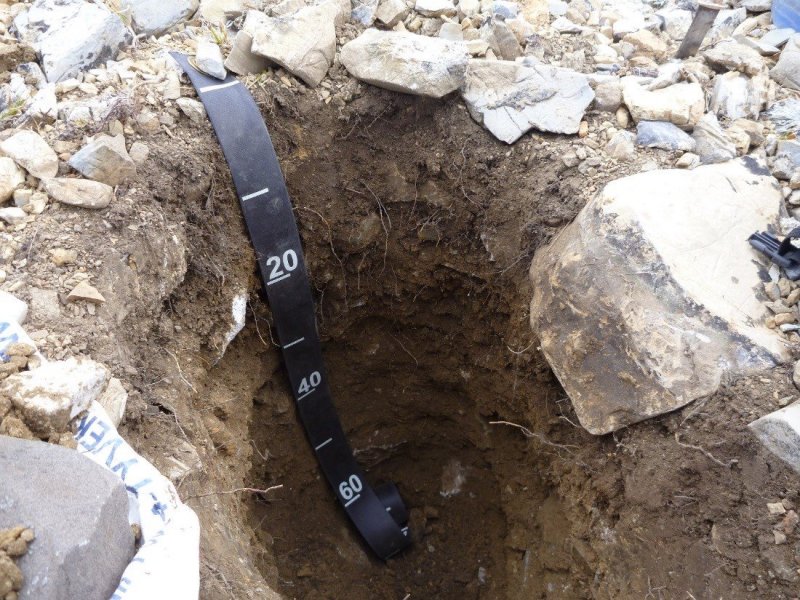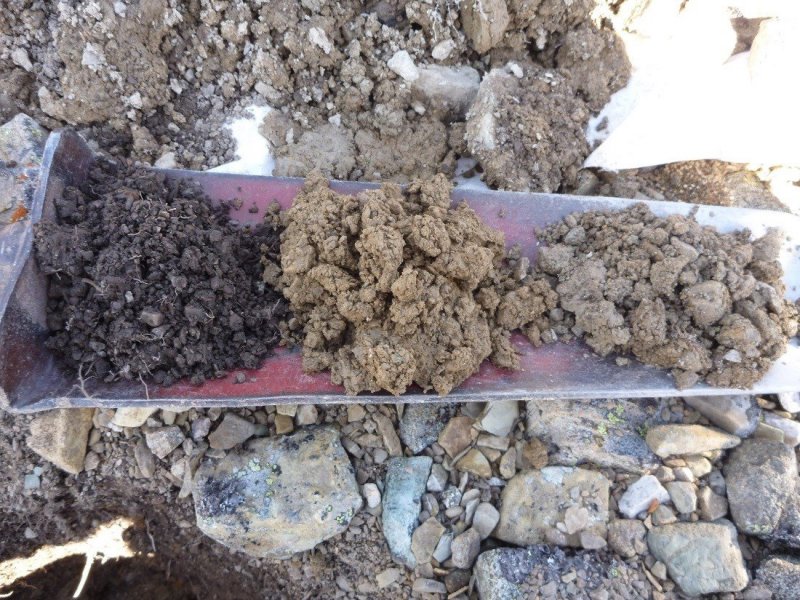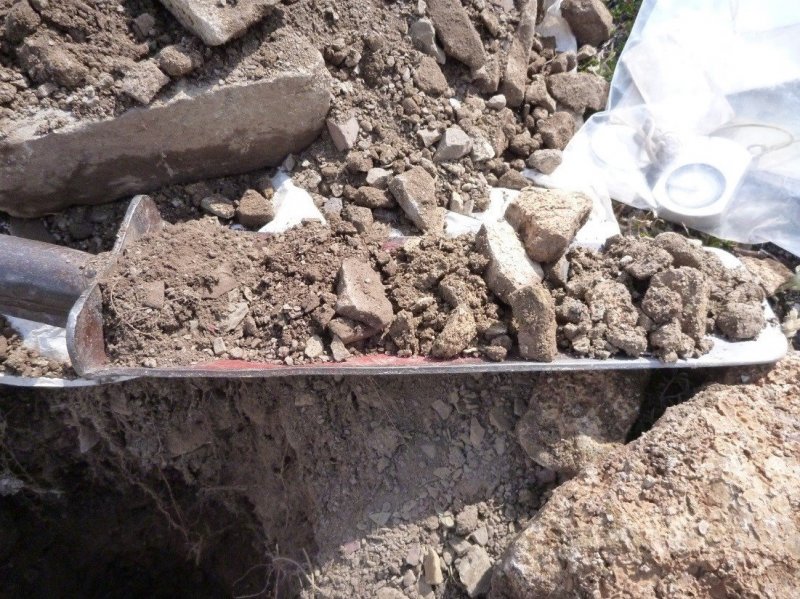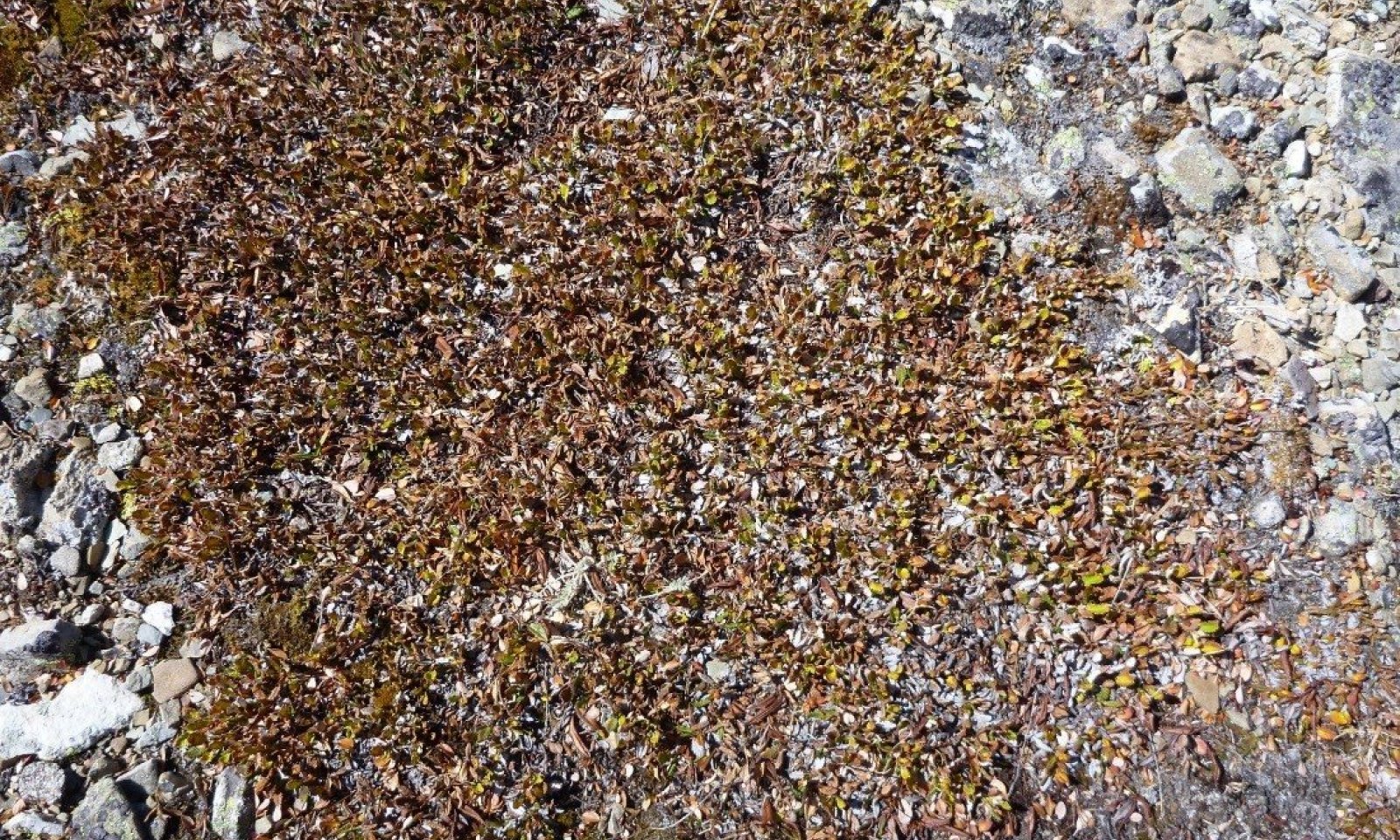

Natural Resources
Conservation Service
Ecological site R043AX971MT
Alpine Solifluction Terrace Dryas octopetala (Arctostaphylos uva-ursi/Salix arctica)
Last updated: 4/10/2025
Accessed: 12/19/2025
General information
Provisional. A provisional ecological site description has undergone quality control and quality assurance review. It contains a working state and transition model and enough information to identify the ecological site.
MLRA notes
Major Land Resource Area (MLRA): 043A–Northern Rocky Mountains
This MLRA is located in Montana (43 percent), Idaho (34 percent), and Washington (23 percent). It makes up about 31,435 square miles (81,460 square kilometers). It has no large cities or towns. It has many national forests, including the Okanogan, Colville, Kootenai, Lolo, Flathead, Coeur d’Alene, St. Joe, Clearwater, and Kaniksu National Forests.
This MLRA is in the Northern Rocky Mountains Province of the Rocky Mountain System. It is characterized by rugged, glaciated mountains; thrust- and block-faulted mountains; and hills and valleys. Steep-gradient rivers have cut deep canyons. Natural and manmade lakes are common.
The major Hydrologic Unit Areas (identified by four-digit numbers) that make up this MLRA are: Kootenai-Pend Oreille-Spokane (1701), 67 percent; Upper Columbia (1702), 18 percent; and Lower Snake (1706), 15 percent. Numerous rivers originate in or flow through this area, including, the Sanpoil, Columbia, Pend Oreille, Kootenai, St. Joe, Thompson, and Flathead Rivers.
This area is underlain primarily by stacked slabs of layered sedimentary or metasedimentary bedrock. The bedrock formations range from Precambrian to Cretaceous in age. The rocks consist of shale, sandstone, siltstone, limestone, argillite, quartzite, gneiss, schist, dolomite, basalt, and granite. The formations have been faulted and stacked into a series of imbricate slabs by regional tectonic activity. Pleistocene glaciers carved a rugged landscape that includes sculpted hills and narrow valleys filled with till and outwash. Continental glaciation over road the landscape in the northern half of the MLRA while glaciation in the southern half was confined to montane settings.
The average annual precipitation is 25 to 60 inches (635 to 1,525 millimeters) in most of this area, but it is as much as 113 inches (2,870 millimeters) in the mountains and is 10 to 15 inches (255 to 380 millimeters) in the western part of the area. Summers are dry. Most of the precipitation during fall, winter, and spring is snow. The average annual temperature is 32 to 51 degrees F (0 to 11 degrees C) in most of the area, decreasing with elevation. In most of the area, the freeze-free period averages 140 days and ranges from 65 to 215 days. It is longest in the low valleys of Washington, and it decreases in length with elevation. Freezing temperatures occur every month of the year on high mountains, and some peaks have a continuous cover of snow and ice.
The dominant soil orders in this MLRA are Andisols, Inceptisols, and Alfisols. Many of the soils are influenced by Mount Mazama ash deposits. The soils in the area have a frigid or cryic soil temperature regime; have an ustic, xeric, or udic soil moisture regime; and dominantly have mixed mineralogy. They are shallow to very deep, are very poorly drained to well drained, and have most of the soil texture classes. The soils at the lower elevations include Udivitrands, Vitrixerands and Haplustalfs. The soils at the higher elevations include Dystrocryepts, Eutrocryepts, Vitricryands , and Haplocryalfs. Cryorthents, Cryepts, and areas of rock outcrop are on ridges and peaks above timberline
This area is in the northern part of the Northern Rocky Mountains. Grand fir, Douglas-fir, western red cedar, western hemlock, western larch, lodgepole pine, subalpine fir, ponderosa pine, whitebark pine, and western white pine are the dominant overstory species, depending on precipitation, temperature, elevation, and landform aspect. The understory vegetation varies, also depending on climatic and landform factors. Some of the major wildlife species in this area are whitetailed deer, mule deer, elk, moose, black bear, grizzly bear, coyote, fox, and grouse. Fish, mostly in the trout and salmon families, are abundant in streams, rivers, and lakes.
More than one-half of this area is federally owned and administered by the U.S. Department of Agriculture, Forest Service. Much of the privately-owned land is controlled by large commercial timber companies. The forested areas are used for wildlife habitat, recreation, watershed, livestock grazing, and timber production. Meadows provide summer grazing for livestock and big game animals. Less than 3 percent of the area is cropland.
LRU notes
This ecological site resides in MLRA 43A in the Livingston-Lewis-Apgar Mountains which includes the bulk of Glacier National Park (GNP) and the lower western valley portions along the Flathead River. The landscape is mountains and landforms include glaciated mountains with associated features such as U-shaped valleys, mountain slopes, alpine ridges, cirques, valley floors and moraines. Glaciation of this area was in the form of alpine, icecaps and valley outlet glaciers. It also includes associated alluvium and outwash features. This area includes low valleys to tall mountains with elevation ranging 989-2,762 m (3,250-9,050 ft.). The climate is cold and wet with mean annual air temperature of 3 degrees Celsius (37 degrees F)., mean frost free days of 65 days and mean annual precipitation of 1,295 mm (51 in.) and relative effective annual precipitation is 169 cm (66 in.). The soil temperature regime is cryic and the soil moisture regime is udic. The geology of this area is dominated by metasedimentary rocks of the Belt Supergroup (Grinnell argillite and Siyeh limestone) with minor Tertiary sediments. Soils are generally weakly developed on mountain slopes within U-shaped valleys. Parent materials are commonly of colluvium, till, and residuum from metasedimentary rocks. Limestone bedrock within this part of the Belt Supergroup is not highly calcareous and due to high precipitation received in this area most carbonates at mid and upper elevations have been leached from the soil profiles. Bedrock depth varies greatly with location, landform and slope position. Volcanic ash is often found in the soil surface with various degrees of mixing. Thicker volcanic ash can be found on more stable positions on mid and upper elevation slopes that are protected from wind erosion. Volcanic ash is not typically found in low elevation areas on stream and outwash terraces associated with streams and rivers. There are numerous large lakes including St. Mary, Bowman, Kintla, Lake Sherburne, Logging, Upper Waterton and numerous creeks (
Classification relationships
NVC Classification Dryas octopetala-Carex rupestris Dwarf shrub Herbaceous Vegetation CEGL001892
Physiognomic Class Herbaceous Vegetation (V)
Physiognomic Subclass Perennial graminoid vegetation (V.A.)
Physiognomic Group Temperate or subpolar grassland with a sparse dwarf-shrub layer (V.A.8.)
Physiognomic Subgroup Natural/Semi-natural temperate or subpolar grassland with a sparse dwarf-shrub layer (V.A.8.N.c.)
Formation Short temperate or subpolar alpine grassland with a sparse needle-leaved or microphyllous evergreen dwarf-shrub layer (V.A.8.N.c.)
Alliance Dryas octopetala Dwarf-shrub Herbaceous Alliance (A.1577)
Alliance (English name) Eight-petal Mountain avens Dwarf-shrub Herbaceous Alliance
Association Dryas octopetala-Carex rupestris Dwarf-shrub Herbaceous Vegetation
Association (English name) Eight-petal Mountain avens-Curly Sedge Dwarf –shrub Herbaceous Vegetation
Ecological Systems: Rocky Mountain Alpine Turf (CES306.816)
Ecological site concept
Ecological Site Concept
The 43A Alpine Solifluction Terrace ecological site is found at high elevations (1,700-2,600 m. 5,575-8,530 ft.) on ridges or backslopes in the mountains or cirque floors mainly on northern or western aspects of moderate to steeper slopes (10-40 percent). Due to frost heave action, solifluction terraces have developed, in which there is a sorting of gravels and vegetation into stripes. Shrub species can be dominated by Dryas octopetala or can be a mixture with Arctostaphylos uva-ursi and Salix arctica as well. Typical snow-loving tundra species are present including Arnica rydbergii, Arenaria capillaris, Astragalus bourgovii, Hedysarum suphurescens, Gentiana calycosa, Silene acaulis, Carex rupestris, Minuartia obtusiloba, Polygonum viviparum, Pedicularis contorta, Erigeron compositus, and Smelowskia calycina. Ubiquitous species occur as well, including Achillea millefolium, Galium boreale, Lupinus argenteus, Agoseris glauca, Poa alpina, and Trisetum spicatum. The soils in this ecological site are moderately deep, well drained, and very gravelly in the surface and subsurface. Where rock fragments are angular the parent material is dominated by colluvium or material moved by gravity from adjacent upslope areas over residual bedrock. In some areas, these soils may also have a mixture of glacial till and colluvium over bedrock residuum. Diagnostic features of these soils include an ochric epipedon, cambic horizon indicating weak soil development and argillic horizons, in which clay particles have been accumulated within the subsoil, indicating more significant soil development. Soils are in the taxonomic subgroup Lithic Haplocryepts.
Associated sites
| R043AX979MT |
Alpine Nivation Hollow Payson’s sedge / black alpine sedge -northern singlespike sedge / Drummond’s rush (Carex paysonis/ Carex nigricans-Carex scirpoidea/ Juncus drummondii) The 43A Alpine Nivation Hollow is found on backslope, footslope and toeslope positions on cirque ridge landforms in the mountains, on all aspects, with low to moderate slopes (8-15 percent) at elevations ranging 1,850 to 2,450 meters. A Nivation hollow is defined as a shallow, non-cliff depression or hollow on a mountainside permanently or intermittently occupied by a snowbank or snow patch (Wysocki, 2009).The 43A Alpine Nivation Hollow has soils that are well drained and moderately deep. During snow melt-out, water can occur at the site for brief periods due to the run-in or concave position, however, the duration of saturation is not long enough to cause redoximorphic soil conditions. The water availability remains high for the short growing season with early and mid-summer melt-out, summer rains, somewhat drier windy fall conditions, and then returning to snow accumulation in early fall. The site holds snow the longest of any alpine community, and therefore has a very short growing season of 10-12 weeks and then returns to snow.The 43A Alpine Nivation Hollow has a reference vegetation community of a simple structure of extremely dense, low-growing sedge turf with a few snow-tolerant forb species. The vegetation is dominated by one to two mat-forming sedges including Payson’s sedge (Carex paysonis), black alpine sedge (Carex nigricans), and northern singlespike sedge (Carex scirpoidea). Overall, due to harsh site conditions, there is lower species diversity although forbs do occur. |
|---|---|
| R043AX962MT |
Alpine Unstable Talus rocky ledge penstemon (Penstemon ellipticus) The 43A alpine unstable talus ecological site resides on extensive talus slopes on very steep to steep slopes with a surface dominated by large rock fragments or talus. The landforms are cirque headwalls, colluvial aprons and glacial valley walls. The 43A alpine unstable talus ecological site has soils that are deep, well to somewhat excessively drained and have abundant rock fragments throughout. These soils are generally classified in the Entisols or Inceptisols soil orders, indicating that they have virtually no soil development because they are on active positions of the landscape or have only weakly developed soil diagnostic characteristics. The 43A alpine unstable talus ecological site has a reference vegetation community of Rocky ledge penstemon (Penstemon ellipticus), buttecandle (Cryptantha celosioides), silverleaf phacelia (Phacelia hastata) and alpine leafybract aster (Symphyotrichum foliaceum). |
| F043AX954MT |
Upper Subalpine Cold Coniferous subalpine fir (Engelmann spruce) /thinleaf huckleberry-rusty menziesia/ Hitchcock’s smooth woodrush-beargrass/yellow avalanche lily. The 43A Upper Subalpine Cold Coniferous (ABLA/LUGLH) ecological site is found along the continental divide in cold, and moist to moderately dry, high elevations in the upper subalpine. It is primarily on cirque platform and headwall landforms, on backslope and shoulder positions at elevations ranging 1,700 to 2,600 meters (5,575-8,530 ft.) with moderate to steep slopes ranging 10% to 80%.The 43A Upper Subalpine Cold Coniferous (ABLA/LUGLH) has soils associated with this ecological site that are moderately deep, well drained and derived from glacial till or colluvium over residuum weathered from metasedimentary rock. Moderately deep depth class indicates that these soils are greater than 50 cm (20 inches) deep, but less than 100 cm (40 inches). These soils classify in the Inceptisols soil order and in the Typic Haplocryepts taxonomic subgroup. The 43A Upper Subalpine Cold Coniferous (ABLA/LUGLH) ecological site has a reference vegetation community of subalpine fir (and minor Engelmann spruce) with an understory of thinleaf huckleberry, rusty menziesia, Hitchcock’s smooth woodrush-beargrass and yellow avalanche lily. |
| F043AX958MT |
Alpine Krummholtz Coniferous subalpine fir-whitebark pine/grouse whortleberry Abies lasciocarpa-Pinus albicaulis (Picea engelmannii)/Vaccinium scoparium The 43A alpine krummholtz coniferous site is found along the Continental Divide in the severe, cold, high elevations of the upper subalpine and timberline zones. The dominant landform is cirque headwalls, on backslope positions, at elevations ranging from 1,800 to 2,600 meters (5,900-8,530 ft.). This site occurs on all aspects and generally on steeper slopes ranging from 15 to 80 percent.The 43A Alpine Krummholtz Coniferous ecological site has soils associated with this ecological site that are deep and well drained and are on steep mountain slopes. Due to the high amount of rock fragments throughout these soils their ability to hold and store water is limited. Active slope processes and erosion limit the amount of soil development causing these soils to be classified in the Inceptisols soil order. The 43A Alpine Krummholtz Coniferous has a reference vegetation community of Subalpine fir and Whitebark pine overstory (with minor Engelmann spruce) and an understory of grouse whortleberry, thinleaf huckleberry, Hitchcock’s smooth woodrush, beargrass, Green false hellebore, Sitka valerian and Yellow avalanche lily. |
Similar sites
| R043AP809MT |
Upland Alpine Group These sites are similar in that they both reside in the alpine lifezone and experience harsh and dessicating winds, short growing seasons and very cold winter temperatures. The reference communities are similar including eight petal mountain avens and arctic willow. |
|---|
Table 1. Dominant plant species
| Tree |
Not specified |
|---|---|
| Shrub |
(1) Dryas octopetala |
| Herbaceous |
(1) Silene acaulis |
Click on box and path labels to scroll to the respective text.
